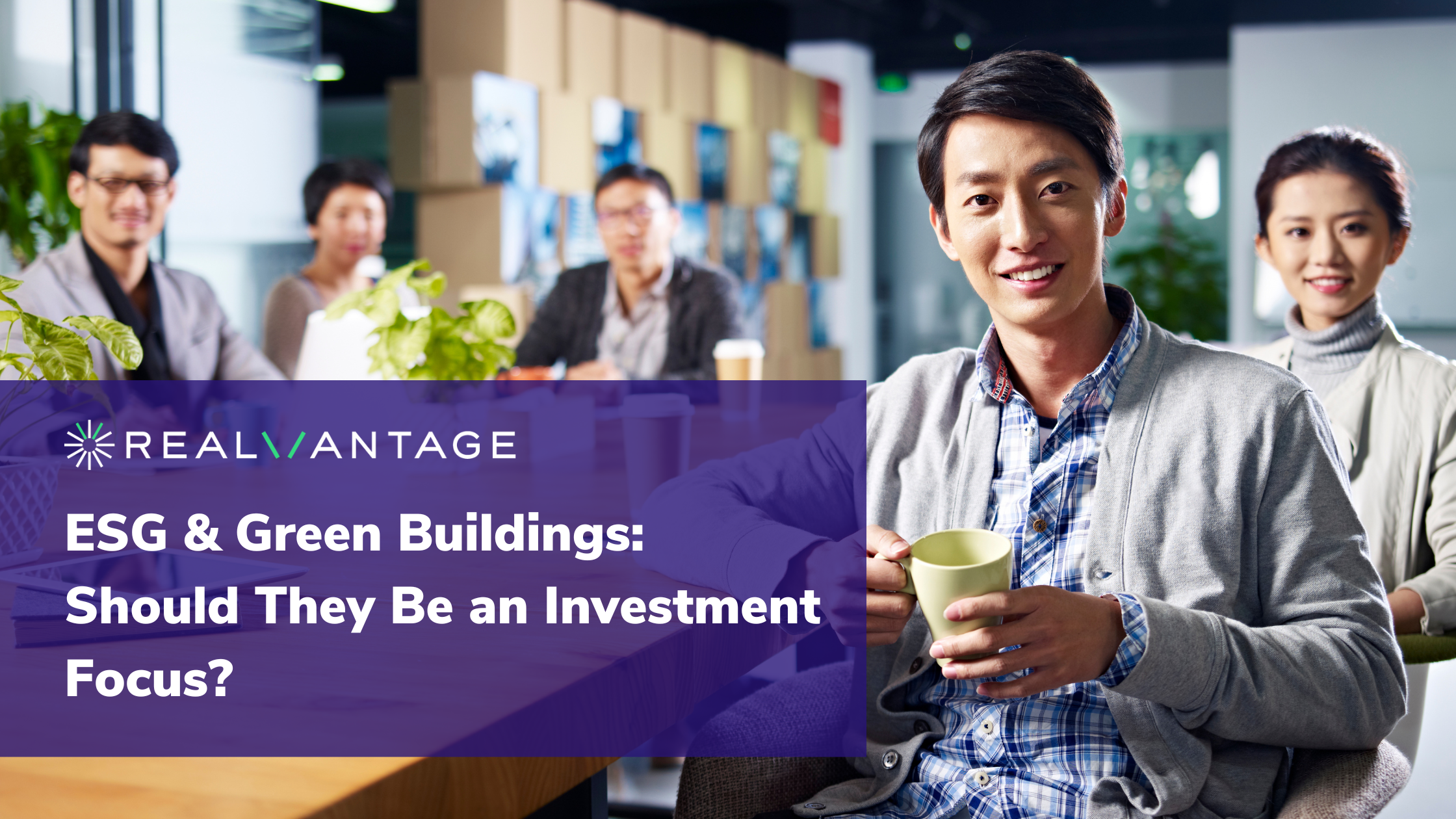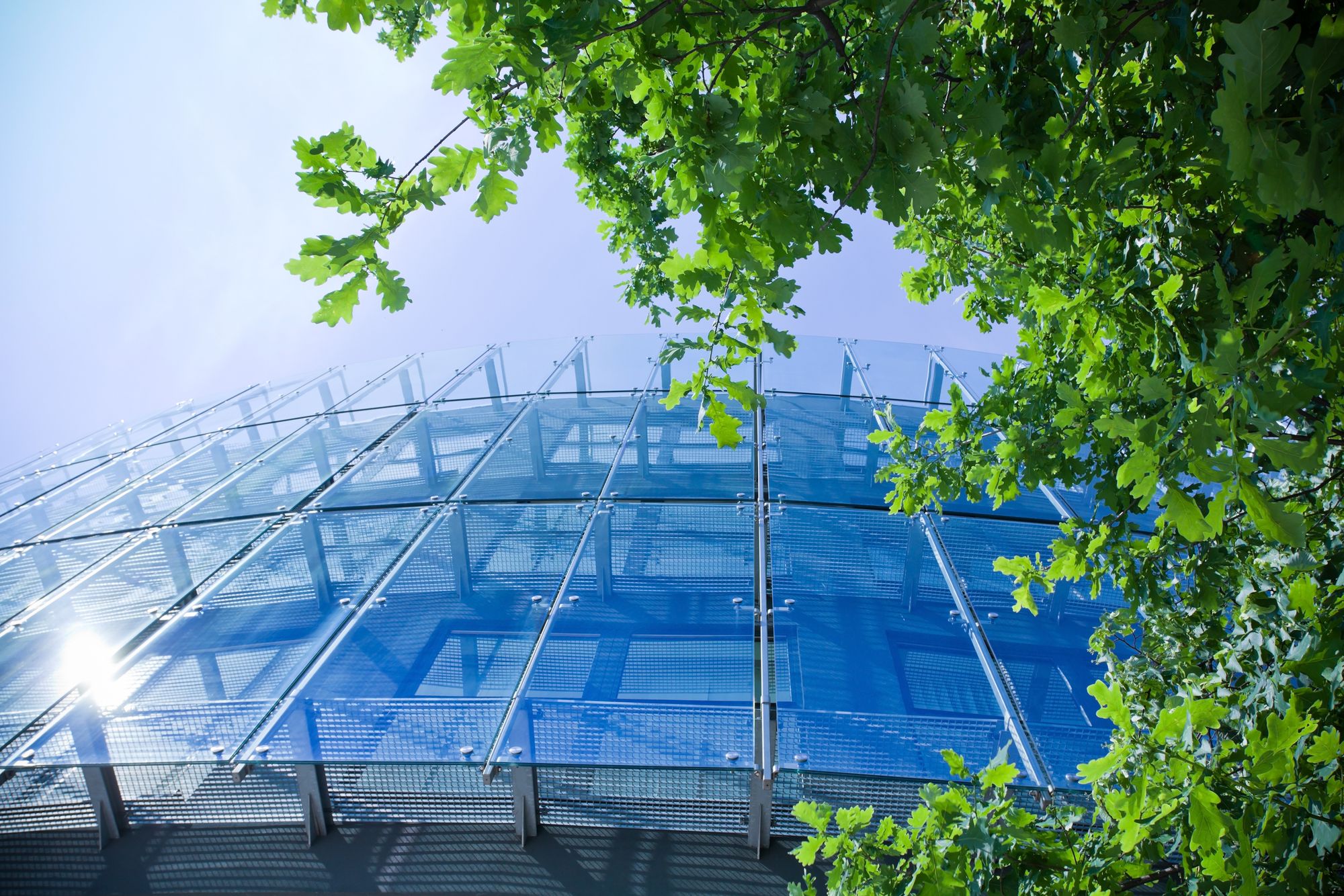ESG & Green Buildings: Should They Be an Investment Focus?
With the hubbub about ESG investing and green buildings growing louder in recent years, many real estate investors now consider properties that adhere to ESG standards to be a preferred investment option. Find out what’s the investment case for these properties.

Did you know that the built environment generates 39% of global greenhouse gas emissions? Specifically, 28% of these comprises operational emissions, while 11% results from building materials and construction, according to a 2021 World Economic Forum report. It is no wonder that decarbonising the built environment to achieve net-zero carbon emissions by 2050 is high on the agenda of the 2021 United Nations Climate Change Conference, or COP26.
In recent years, the rise of the investment notion of environmental, social and governance (ESG), or ‘sustainable investing’ as it is otherwise known, may also be another strong driver for buildings to become ‘greener’.
This trend is gaining momentum and traction quickly, as witnessed by the development of real estate sustainability guidelines, such as the U.S. Leadership in Energy and Environmental Design rating system (a.k.a. ‘LEED’); the U.K. Building Research Establishment Environmental Assessment Method (a.k.a. BREEAM); the European Association for Investors in Non-Listed Real Estate Vehicles (a.k.a. ‘INREV’); the National Australian Built Environment Rating System (a.k.a. ‘NABERS’); as well as the increased participation in the 2020 GRESB real estate assessments.
What these imply is that more and more building owners are geared towards improving the energy and water efficiency as well as reducing the carbon footprint of their existing buildings. Property developers are also now more ready to incorporate technologies and features that achieve these goals for the new buildings they will construct, effectively addressing the ‘E’ in ESG. Of course, that is not to forget that there is also a push for asset owners to address the ‘S’ in ESG by adopting features that will enhance the health and wellness of their building occupiers, or provide more affordable housing that benefits a wider community.
ESG’s an advantage, not an envy
It is easy to understand why green buildings or ESG-compliant properties are quickly gaining popularity over the years, as there are obvious economic and social benefits. These include:
Utility cost savings
One of the key economic benefits of operating a green building would definitely be the reduction of energy and water consumption, and the hefty bills that entail.
According to a news report by The Straits Times, between the years 2008 and 2021, 1,000 commercial buildings across Singapore had shown a 14% improvement in energy efficiency. This resulted in energy savings of 1,000 gigawatt hours, equivalent to a whopping SGD200 million in electricity cost savings a year.
And we are not just talking about energy savings on the common things operating in a building, such as the lights, lifts, or escalators. In fact, the bulk of the power consumed in a building results from heating and cooling it. In the U.S., for example, about 43% of all energy used is attributed to this purpose. And in Singapore, up to 40% to 50% of all building electricity consumption is attributed to cooling. So, tackling the issue of the high energy consumption and cost of heating and cooling a building is critical.
When it comes to cooling a building, one of the commonest ways buildings can save energy is to adopt an evaporative cooling system, which makes use of non-potable water that is constantly reused. In some cases, these systems could provide 50% or more energy savings for building owners when applied appropriately, says an expert from Phoenix Manufacturing Inc., a leader in the evaporative cooler industry. This may be just one way to reduce energy consumption in a building, but it is one that will make a significant difference.
Water efficiency is also key to making buildings more environmentally sustainable. Some strategies property managers typically adopt include water-saving plumbing fixtures and the use of non-potable water to serve various purposes in a building. You may be surprised to know that water-saving plumbing fixtures alone could save more than 80% of a building’s water consumption, according to the findings of the U.S.-based Green Education Foundation. This is also one of the simplest ways to reduce water usage in a building.
Hence, huge utility cost savings are obviously a significant economic benefit, and that is likely to continue to drive asset owners to ‘go green’.
Sign Up at RealVantageLower design and construction costs than before
As global building codes for green buildings become stricter, and the supply chains for green materials and technologies become more developed, the real estate industry is now more skilled at delivering green buildings. According to the World Green Building Council, this has resulted in an overall reduction in design and construction costs associated with green buildings – barring the effects of inflation, of course.
While this may not necessarily mean that the cost of developing green buildings is lower than those of the not-so-green ones, it certainly means that it is now cheaper to design and construct eco-friendly buildings. This could only be music to the ears of developers and asset owners alike.
And even if the cost of developing such green buildings are higher than other buildings, research has shown that the energy and water cost savings throughout the life cycle of these buildings would eventually outweigh their early investment costs and “pay for themselves” in the long run.
Higher occupancy, rent and sale prices
With the heightened awareness of environmental sustainability, many corporations are now more inclined towards fulfilling certain criteria on their sustainability agenda, when it comes to renting an office. According to the survey results published in a 2021 report by JLL, seven in 10 companies in Asia Pacific are willing to pay a rental premium to lease sustainability-certified buildings. This also aligns with the fact that the region’s real estate decarbonisation drive is prompting 80% of corporate occupiers to prioritise locations that will help them reduce carbon emissions.
“Green buildings are also more likely to command a higher sale price than other buildings that are less sustainable because of the economic benefits it can reap for asset owners over the long run.”
These mean that green buildings are more likely to attract and retain tenants, and tenants will be more willing to pay a higher rent to have their offices located in such buildings. According to JLL, a majority of Asia Pacific corporate occupiers are already paying a 7% to 10% rental premium to do so.
And eventually, at the point of asset disposition, green buildings are also more likely to command a higher sale price than other buildings that are less sustainable because of the economic benefits it can reap for asset owners over the long run. In fact, a 2022 CBRE report also arrived at the same conclusion, asserting that “green buildings will command higher rents and higher capital values”.

Positive social impact
Over the last two years or so, the COVID-19 pandemic has accentuated the need for asset owners to factor more ESG features in their existing assets and those to be built.
In particular, to address the social aspect in ESG, efforts were made to improve indoor air quality by enhancing air ventilation and filtration systems in office buildings, as well as improve the health and wellness of the occupiers with more intensive and regular cleaning of common areas and shared equipment and amenities, plus making sanitising products more readily available to all.
In some countries where affordable housing and senior living communities are not widely available, ESG investing also comes in to bridge these gaps and generate significant social benefits, while being rewarded with strong financial returns.
So, while ESG real estate investments create significant positive social impact in the communities where the properties are located, it also generates economic benefit for their investors.
Sign Up at RealVantageLook out for ‘greenwashing’
It is easy to jump on the bandwagon and invest in a real estate that is marketed as a green or ESG-compliant property. But do we really know if it is what it claims to be? In some parts of the world where green building performance ratings do not exist, for instance, it might be difficult for investors to differentiate between a genuinely sustainable property and one that is ‘greenwashed’ – that is, a property that is marketed as having a low carbon footprint as well as energy- and water-efficient, but in fact does not possess any or all of these advantages.
In some cases, a property may indeed fulfil the criteria of a green building and be accurately marketed as that. However, the market in which the property is located might not yet see a strong demand for such properties, due to lower sustainability standards. When this happens, such properties might not be valued as highly in that market as those that are located in other markets with higher sustainability standards. That goes to say that investors of these properties might not reap as much economic benefits as they have envisaged or have been promised.
Should investors just take the plunge?
While green buildings and ESG-compliant properties may seem to be attractive real estate investment propositions, investors should probably ask themselves if they are well informed enough to take the plunge yet?
Behind the glittery marketing spiel, it is important for investors to be able to ascertain whether a property they are investing in will truly deliver the promised sustainable economic benefits. To do so, they may need to consider leveraging the expertise of a real estate sustainability and ESG expert, who will conduct rigorous due diligence on their behalf to ensure the genuineness of a green building, the economic benefits that it is likely to generate, as well as the risks that are associated with it.
An investment trend that’s here to stay
It is clear that ESG investing is here to stay for the long term; and so will green buildings. In fact, this investment trend will be beneficial to the overall real estate market, as it will drive a stronger demand for such real estate that will be of a higher quality, environment-friendly, and create a positive social impact on communities to benefit our future generations.
“It is clear that ESG investing is here to stay for the long term; and so will green buildings.”
With more landlords expected to join the ‘green league’ in the future, and governments around the world likely to provide a stronger support and give a regulatory nudge towards realising sustainability objectives, the cost of designing and constructing green buildings should decrease over time, making it quicker for these real estate to start “paying for themselves”.
About RealVantage
RealVantage is a leading real estate co-investment platform, licensed and regulated by the Monetary Authority of Singapore (MAS), that allows our investors to diversify across markets, overseas properties, sectors and investment strategies.
The team at RealVantage are highly qualified professionals who brings about a multi-disciplinary vision and approach in their respective fields towards business development, management, and client satisfaction. The team is led by distinguished Board of Advisors and advisory committee who provide cross-functional and multi-disciplinary expertise to the RealVantage team ranging from real estate, corporate finance, technology, venture capital, and startups growth. The team's philosophy, core values, and technological edge help clients build a diversified and high-performing real estate investment portfolio.
Get in touch with RealVantage today to see how they can help you in your real estate investment journey.
Disclaimer: The information and/or documents contained in this article does not constitute financial advice and is meant for educational purposes. Please consult your financial advisor, accountant, and/or attorney before proceeding with any financial/real estate investments.
